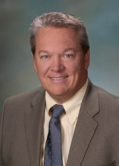A significantly under-reported headline in 2012 was the dramatic increase in U.S. solar installations: Americans installed over 3 gigawatts of solar photovoltaic (PV) systems in 2012 — an unprecedented level, up 71 percent year-over-year. Can you name another industry that grew this much?
America’s forcasted 3.2GW in 2012 is up from 1.9GW in 2011, and less than one gigawatt in 2010. The U.S. industry grew despite questions about economic recovery, limited financing opportunities, an abundance of “cheap” natural gas, and a presidential campaign that made energy independence a political hot potato. One or two high-profile failures brought skepticism on an energy resource that, by all accounts, is one of the most promising ever discovered. The reality is that 2012 was the biggest year ever for U.S. solar installations.
American homeowners, businesses and utilities drove investments in solar energy. California, Arizona, and Colorado accelerated the uptake of solar energy systems to the point of decreasing their incentive programs significantly. The lack of low-interest financing from conventional banks encouraged third-party leases and “power purchase agreements” that enable homeowners to install PV with zero money down.
Industry insiders will look back on 2012 as a year of consolidation. Several well-known brands actually pulled out of the U.S. solar market in 2012, including Sharp, Schott, Siliken and Uni-Solar. Further, the influx of PV modules from China drove prices down an astonishing 30 percent.
While installations expanded, only industry stalwarts remained profitable within this tumultuous pricing environment.
Some 2012 PV highlights included:
- The National Solar Jobs Census reported that the industry enjoyed 13.2 percent year-on-year employment growth. The U.S. solar industry now employs more than 119,000 Americans.
- Sempra U.S. Gas & Power completed construction of the first 92 MW phase of its Copper Mountain Solar 2 solar PV plant in Nevada using First Solar modules.
- The NEDO Japan-U.S. Collaborative Smart Grid Project launched in Los Alamos, N.M., representing a landmark cooperative effort between top international researchers to develop the “smart grid” that will be instrumental for the further optimization of PV.
- Kyocera celebrated its two millionth PV module produced in North America, with manufacturing plants that are generally running near capacity. It took Kyocera five years to produce its first million modules in North America ― and less than two years to produce the second million.
This is all good news for consumers. It means the initial questions regarding the cost and reliability of solar energy have now been completely overcome. While concerns remain about the reliability of low-cost imports, polycrystalline silicon PV cells now have four decades of successful field experience — and products from established producers represent a very reliable solution.
Consumers must stay informed. In their frenzy to enter the industry, many new companies were founded in the past 10 years, and some undoubtedly rushed to market. When a product competes solely on price, there is a real risk that cost-cutting shortcuts will affect performance and reliability. In short: “You get what you pay for.”
To minimize risk, check the PV module’s warranty. If the module is guaranteed for 25 years, and the manufacturer hasn’t been in business that long, the lower price may merely represent a higher risk.
2012 was a year of solar revolution because, against the odds, Americans moved their solar market forward. We must recognize that the 30% federal investment tax credit helped accelerate the U.S. solar market, and that a growing number of states are encouraging solar adoption. Kudos go to the home and business owners who install and use solar energy, and to the utilities serious about building a sustainable energy portfolio.
In 2013, many solar incentive programs will be winding down. With current low costs and more consumers installing PV, we will likely see more financing models including solar leases and loans, and “solar share” programs. One thing is certain: the new year brings new promise for America’s energy future. And there has never been a more exciting time for the U.S. solar energy industry.
By Cecilia Aguillon
Cecilia Aguillon is the Director of Marketing and Government Relations for Kyocera Solar, Inc. She works with local, state, and federal governments across the United States , Canada and Mexico on designing and implementing solar energy programs and renewable portfolio standard programs. Cecilia works with several solar trade associations around the United States . She currently serves as Vice President on the California Solar Energy Industries Association (CalSEIA) Board, on the TXSEIA board, and as member of the U.S. Environmental Protection Agency Good Neighbor Environmental Board. In addition, she is involved in business development, marketing, advertising and public relations activities in the regions Kyocera has market presence. Cecilia has been with Kyocera since 1998.

 Rich Endicott is the Market Manager and President of The Biltmore Bank of Arizona. Mr. Endicott has been in Commercial Banking providing financial service assistance to small and middle market businesses for 32-Years. Rich assumed the role of President at Biltmore Bank in 2008. Among his other responsibilities Rich developed and leads the Banks energy initiatives: These include the development of financing and banking programs for energy related Manufactures, Distributors, Developers and Integrators. Biltmore Bank has helped finance or structure solar projects and programs for Arizona’s Public Schools, Airports, and Universities including ASU and U of A and a number of non-profits throughout Maricopa County. Rich attended KU in Lawrence and later the Duke University Deutsche management program.
Rich Endicott is the Market Manager and President of The Biltmore Bank of Arizona. Mr. Endicott has been in Commercial Banking providing financial service assistance to small and middle market businesses for 32-Years. Rich assumed the role of President at Biltmore Bank in 2008. Among his other responsibilities Rich developed and leads the Banks energy initiatives: These include the development of financing and banking programs for energy related Manufactures, Distributors, Developers and Integrators. Biltmore Bank has helped finance or structure solar projects and programs for Arizona’s Public Schools, Airports, and Universities including ASU and U of A and a number of non-profits throughout Maricopa County. Rich attended KU in Lawrence and later the Duke University Deutsche management program.


You must be logged in to post a comment.